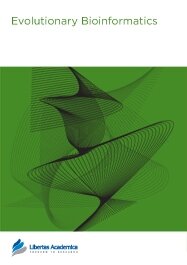

Publication Date: 10 Nov 2011
Type: Original Research
Journal: Evolutionary Bioinformatics
doi: 10.4137/EBO.S8162

The Plasmodium falciparum genome being AT-rich, the presence of GC-rich regions suggests functional significance. Evolution imposes selection pressure to retain functionally important coding and regulatory elements. Hence searching for evolutionarily conserved GC-rich, intergenic regions in an AT-rich genome will help in discovering new coding regions and regulatory elements. We have used elevated GC content in intergenic regions coupled with sequence conservation against P. reichenowi, which is evolutionarily closely related to P. falciparum to identify potential sequences of functional importance. Interestingly, ~30% of the GC-rich, conserved sequences were associated with antigenic proteins encoded by var and rifin genes. The majority of sequences identified in the 5' UTR of var genes are represented by short expressed sequence tags (ESTs) in cDNA libraries signifying that they are transcribed in the parasite. Additionally, 19 sequences were located in the 3' UTR of rifins and 4 also have overlapping ESTs. Further analysis showed that several sequences associated with var genes have the capacity to encode small peptides. A previous report has shown that upstream peptides can regulate the expression of var genes hence we propose that these conserved GC-rich sequences may play roles in regulation of gene expression.
PDF (3.01 MB PDF FORMAT)
RIS citation (ENDNOTE, REFERENCE MANAGER, PROCITE, REFWORKS)
BibTex citation (BIBDESK, LATEX)
XML
PMC HTML
According to my experience as a co-author, I recommend potential authors to publish their innovative bioinformatics work in Evolutionary Bioinformatics. I am particularly satisfied with the rapid and high-quality review process, proofs delivery and eventual publication.

All authors are surveyed after their articles are published. Authors are asked to rate their experience in a variety of areas, and their responses help us to monitor our performance. Presented here are their responses in some key areas. No 'poor' or 'very poor' responses were received; these are represented in the 'other' category.See Our Results
Copyright © 2013 Libertas Academica Ltd (except open access articles and accompanying metadata and supplementary files.)
FacebookGoogle+Twitter
PinterestTumblrYouTube